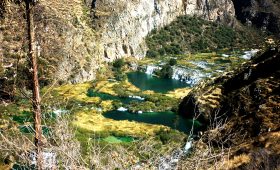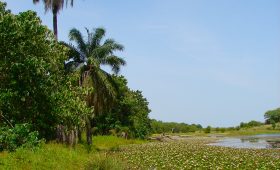Arouane: A Journey Through Time and Sand
Discovering Arouane
Arouane, or Araouane, is a small village in the Malian Sahara, 243 km north of Timbuktu. This remote settlement once thrived as a key stop on the trans-Saharan trade route. Today, it offers a glimpse into a past where caravans transported goods like gold, salt, and ivory across the desert. While Arouane may not boast lush landscapes, its historical significance and stark beauty make it a fascinating destination for the intrepid traveler.
Getting There
Reaching Arouane is not straightforward, but the journey is part of the experience. Start by flying into Bamako, Mali’s capital. From there, take a domestic flight to Timbuktu. The final leg requires arranging a local guide and a 4×4 vehicle to navigate the desert terrain. The drive from Timbuktu to Arouane is an adventure through vast, arid landscapes that echo with history.
Local Transportation
Once in Arouane, transportation options are limited. The village is best explored on foot or by camel, as vehicles are not practical within its confines. This slow pace allows for a deeper connection with the environment and the people who call this harsh landscape home.
Best Time to Visit
Plan your visit between November and February when the temperatures are cooler. Daytime is pleasant, while nights can be chilly—ideal for camping under the stars. Avoid the summer months when the heat can be extreme, making exploration difficult.
Exploring Arouane
The Sahara Desert
The Sahara’s vastness is Arouane’s main draw. Endless sand dunes stretch to the horizon, offering a serene yet challenging environment. A camel ride provides a traditional way to experience the desert, echoing the journeys of historic caravans. Sunsets here are particularly striking, casting the sand in hues of orange and pink.
Historical Significance
Arouane’s history as an entrepôt in the trans-Saharan trade is palpable. In the 16th to 19th centuries, it served as a storage depot for merchants from Timbuktu. Although the village itself lacks grand ruins, its role in history is significant. The barren landscape, once bustling with trade, tells a story of resilience and adaptation.
Local Culture
Engage with the Tuareg people, known for their vibrant clothing and rich traditions. Their nomadic lifestyle is a testament to human adaptability in extreme conditions. While resources are scarce, the hospitality is warm. Participate in traditional music and dance, and sample Tuareg cuisine, which reflects the simplicity and resourcefulness of desert life.
Challenges and Considerations
Arouane is not for the faint-hearted. The journey is long, and the amenities are basic. The village’s isolation means limited access to modern conveniences. Water is scarce and brackish, and fuel is primarily camel dung. Travelers should be prepared for these challenges and approach the experience with respect for the local way of life.
Despite its challenges, Arouane offers a unique opportunity to step back in time and experience the Sahara’s enduring allure. It’s a place where history and nature converge, offering insights into a world shaped by sand and trade.




